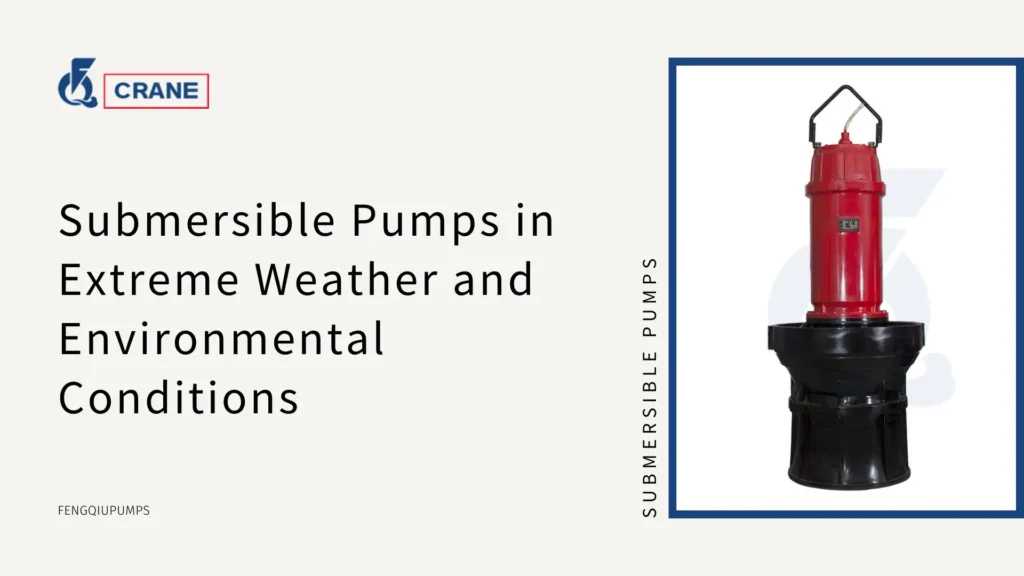Submersible pumps are essential tools for managing water and other fluids in a variety of settings, from residential wells to industrial wastewater systems.
However, when it comes to extreme weather and harsh environmental conditions, not all pumps are created equal.
Whether it’s freezing temperatures, scorching heat, or corrosive environments, submersible pumps must be designed and selected with these challenges in mind.
This article will guide you through the key considerations for choosing and using submersible pumps in demanding conditions, ensuring reliability, durability, and optimal performance.
What Makes Submersible Pumps Suitable for Extreme Conditions?
Robust Construction
Submersible pumps are engineered with robust construction to withstand harsh environments.
The sealed design is one of their most significant advantages, preventing water and debris from entering the motor and other critical components.
This design is crucial for submerged applications, where external elements can lead to equipment failure.
The materials used in their construction often include high-strength alloys and reinforced plastics, which enhance durability and reduce the likelihood of breakdowns in extreme conditions.
Corrosion-Resistant Materials
Many submersible pumps are manufactured from materials such as stainless steel or thermoplastic that resist corrosion, particularly in environments where exposure to harsh chemicals, saltwater, or acidic substances is common.
For instance, pumps used in industrial settings or coastal areas benefit from these material choices, ensuring longevity and reducing maintenance needs.
By selecting corrosion-resistant pumps, users can mitigate the effects of environmental stressors, thus prolonging the pump’s operational life.
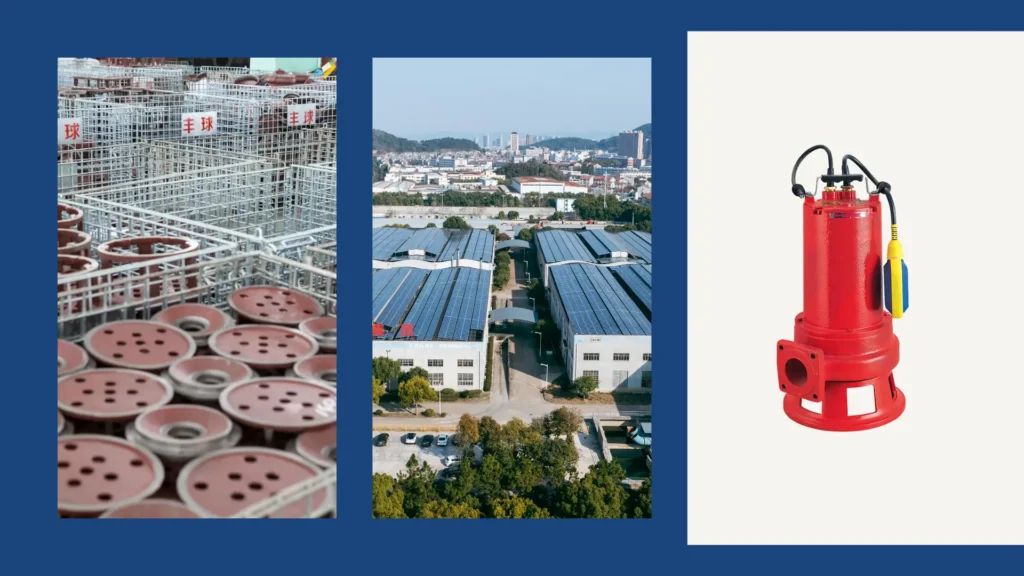
Temperature Tolerance
High-quality submersible pumps are designed to operate efficiently across a wide range of temperatures.
This temperature tolerance is essential for applications that encounter both freezing cold and extreme heat.
Manufacturers often conduct rigorous testing to ensure their products can maintain performance without compromising efficiency, even under temperature fluctuations.
This capability is vital for users in regions with extreme seasonal variations, ensuring that the pump remains reliable throughout the year.
Also Read:
Industrial Submersible Pumps for Oil and Gas Industry
How Do Submersible Pumps Perform in Freezing Temperatures?
Anti-Freeze Features
In freezing conditions, submersible pumps are often equipped with built-in heaters or thermal protection to prevent the motor from freezing.
These features ensure that the pump can start and operate smoothly, even in sub-zero temperatures.
Such mechanisms are crucial for agricultural applications or in areas where irrigation systems need to function reliably regardless of weather conditions.
Insulated Housing
Some pumps come with insulated housing designed to protect internal components from extreme cold.
This insulation not only prevents freezing but also reduces the risk of damage caused by thermal stress, which can occur when temperatures fluctuate rapidly.
Insulated pumps are particularly beneficial in climates where temperature swings are common, providing an added layer of protection against potential failures.
Proper Installation Depth
Installing the pump below the frost line is a critical consideration in cold climates.
This practice prevents the pump and surrounding water from freezing, ensuring uninterrupted operation during winter months.
Proper installation techniques, such as burying the pump deep enough or using protective casings, can significantly enhance the reliability of submersible pumps in areas prone to freezing temperatures.
Can Submersible Pumps Handle High Temperatures and Heat Exposure?
Heat-Resistant Materials
Submersible pumps designed for high-temperature environments utilize materials that can withstand heat without degrading.
For example, specialized plastics and metal alloys are often employed in these pumps to ensure they can handle the thermal stresses associated with hot liquids or steam.
This feature is particularly important in industrial applications, where pumps may encounter extreme temperatures regularly.
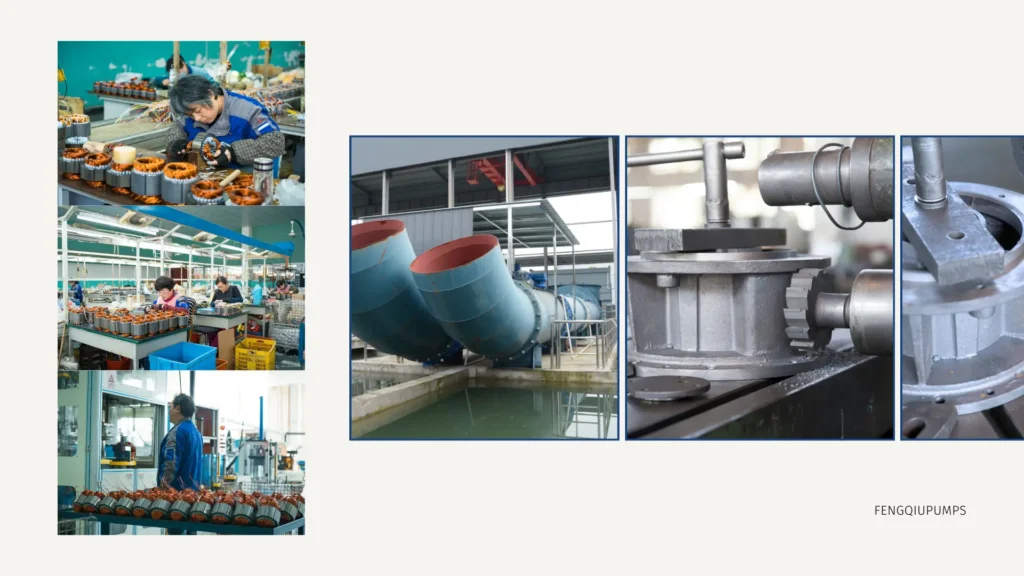
Cooling Mechanisms
Advanced submersible pumps often incorporate cooling systems designed to prevent overheating.
These cooling mechanisms may include external cooling jackets or integrated water-cooling systems that help maintain the motor at a safe operating temperature.
By effectively dissipating heat, these systems ensure optimal performance even in scorching conditions, thereby extending the pump’s lifespan.
Thermal Protection Sensors
Many modern pumps are equipped with thermal protection sensors that automatically shut down the system if temperatures exceed safe limits.
This safety feature is vital in preventing damage due to overheating, ensuring that the pump remains operational without risking catastrophic failures.
By integrating these sensors, manufacturers enhance the reliability and safety of submersible pumps in high-temperature environments.
How Do Submersible Pumps Perform in Flood-Prone Areas?
Waterproof Design
Submersible pumps are inherently waterproof, making them ideal for flood-prone areas.
Their sealed construction allows them to operate fully submerged, ensuring effective water removal during floods.
This capability is crucial for emergency response situations, where rapid removal of excess water can prevent property damage and promote safety.
High-Capacity Performance
In flood situations, high-capacity submersible pumps are essential for managing large volumes of water quickly.
Users should look for pumps with high flow rates and strong suction capabilities to ensure optimal performance during floods.
These pumps are designed to handle the challenges posed by rapidly rising water levels and can significantly reduce the impact of flooding in affected areas.
Debris Handling
Floodwater often contains debris such as mud, leaves, and rocks.
Submersible pumps designed for such conditions include features like large intake screens or grinders that allow them to handle solids without clogging.
This capability is essential for maintaining continuous operation during floods, as it prevents the pump from becoming obstructed and ensures efficient water removal.
And More:
- Advantages of Using Submersible Pumps in Agriculture
- Integration of Green Energy with Submersible Pumps
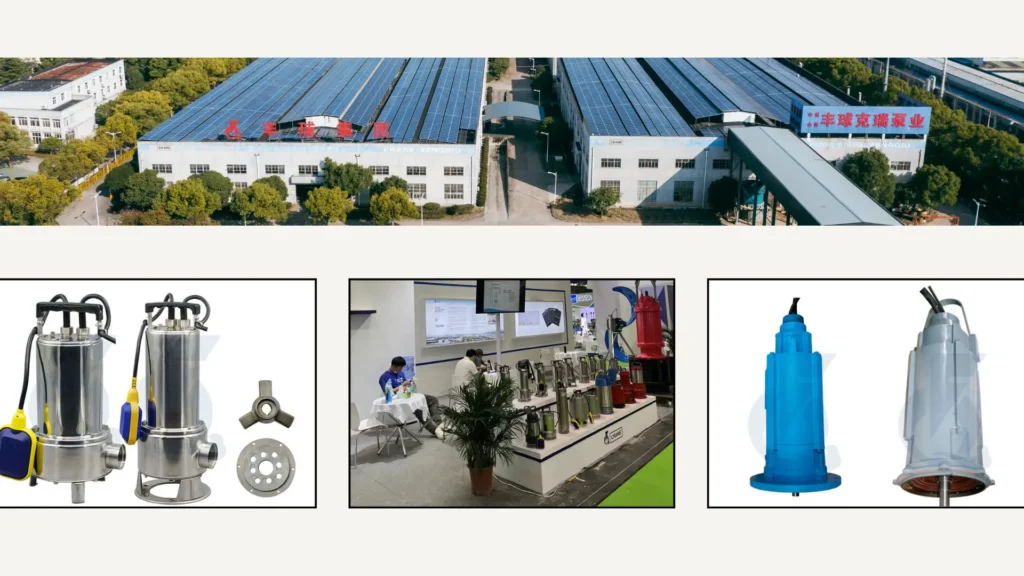
Are Submersible Pumps Resistant to Corrosive Environments?
Material Selection
Pumps made from corrosion-resistant materials, such as stainless steel or specialized coatings, are ideal for corrosive environments.
These materials prevent rust and degradation, even when exposed to chemicals or saltwater.
Selecting the right pump for corrosive applications is crucial for maintaining performance and reducing maintenance costs over time.
Sealed Motor Housing
A tightly sealed motor housing is essential for protecting internal components from corrosive substances.
This design feature is especially important in industrial or marine applications, where exposure to harsh chemicals is common.
By ensuring that the motor is well-protected, users can enhance the longevity and reliability of their submersible pumps in challenging environments.
Regular Maintenance
Even in corrosive environments, regular maintenance can extend the life of your submersible pump.
Flushing the system and inspecting for wear and tear can prevent premature failure.
Implementing a routine maintenance schedule helps identify potential issues before they escalate, ensuring that the pump remains operational and efficient.
What Features Make Submersible Pumps Ideal for Stormwater Management?
Heavy-Duty Construction
Stormwater pumps are built to handle large volumes of water and debris.
Their heavy-duty construction ensures they can withstand the rigors of stormwater management without breaking down.
These pumps are designed to operate continuously during storm events, providing reliable performance when it’s needed most.
Automatic Operation
Many submersible pumps for stormwater management come with automatic controls that activate the pump when water levels rise.
This automation ensures timely and efficient water removal, reducing the risk of flooding and property damage.
Users can benefit from peace of mind, knowing that the system will respond to changing conditions without manual intervention.
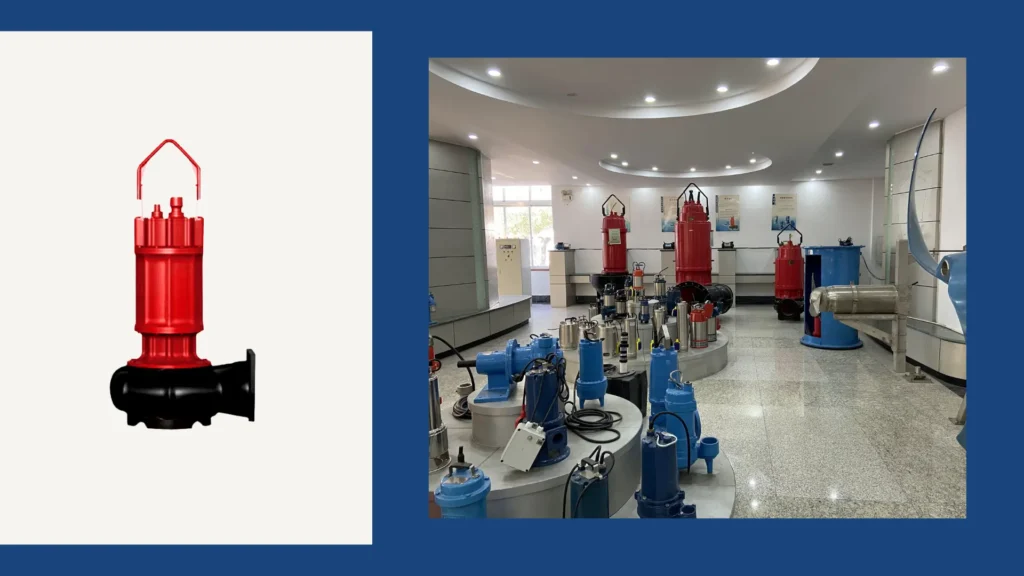
Energy Efficiency
Efficient stormwater pumps are designed to reduce energy consumption while maintaining high performance.
Users should look for models with energy-saving features, such as variable speed drives or smart controls, to lower operational costs.
Energy-efficient pumps not only save on electricity bills but also contribute to environmental sustainability.
How Do Submersible Pumps Handle Abrasive Materials?
Durable Impellers
Pumps designed for abrasive environments feature impellers made from hardened materials like cast iron or ceramics.
These durable components resist wear and tear, ensuring long-lasting performance even when handling gritty materials.
The design of these impellers is crucial for applications in industries such as mining or construction, where abrasive substances are common.
Protective Coatings
Some pumps are coated with abrasion-resistant materials to protect critical components from wear. This protective coating is particularly useful in applications where sand, gravel, and other abrasive materials are present. By utilizing protective coatings, manufacturers enhance the durability of submersible pumps and reduce the frequency of maintenance.
Easy Maintenance
Pumps used in abrasive conditions should be easy to disassemble and clean.
Regular maintenance helps remove accumulated debris and prevents damage to internal parts.
User-friendly designs that facilitate routine maintenance can significantly extend the life of the pump and ensure consistent performance under challenging conditions.
What Safety Features Are Essential for Submersible Pumps in Extreme Conditions?
Overload Protection
Overload protection is a critical safety feature that prevents the pump from overheating or drawing too much power.
This safeguard is especially crucial in extreme conditions where the pump may be operating at its limits.
By incorporating overload protection, manufacturers help users avoid potential failures and reduce the risk of costly repairs.
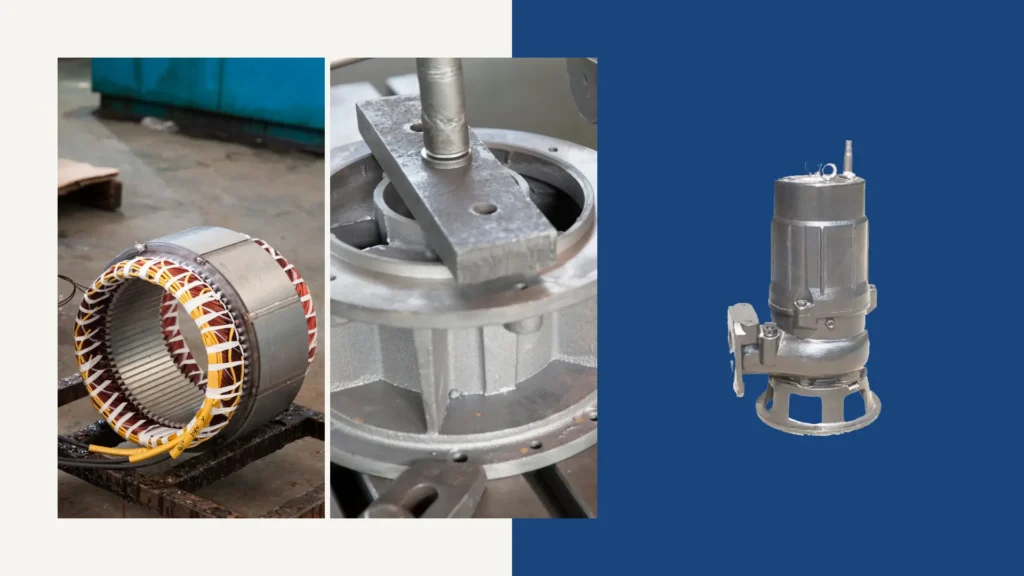
Leak Detection
Advanced submersible pumps may include leak detection systems that alert users to potential issues.
This early warning system helps prevent catastrophic failures and costly repairs by allowing for timely intervention.
Implementing leak detection technology enhances overall system reliability and provides peace of mind for users in demanding applications.
Shock Resistance
In environments prone to electrical surges or lightning strikes, shock-resistant pumps are essential.
These models are designed to withstand electrical disturbances without damage, ensuring continuous operation even under adverse conditions.
By investing in shock-resistant technology, users can protect their pumps from unforeseen electrical issues.
Conclusion
Submersible pumps are versatile and reliable tools that can perform exceptionally well in extreme weather and environmental conditions.
By understanding the specific challenges of your application—whether it’s freezing temperatures, corrosive environments, or flood-prone areas—you can select a pump that meets your needs.
Look for features like robust construction, corrosion-resistant materials, and advanced safety mechanisms to ensure long-lasting performance.
With the right submersible pump, you can tackle even the most demanding conditions with confidence and efficiency.

